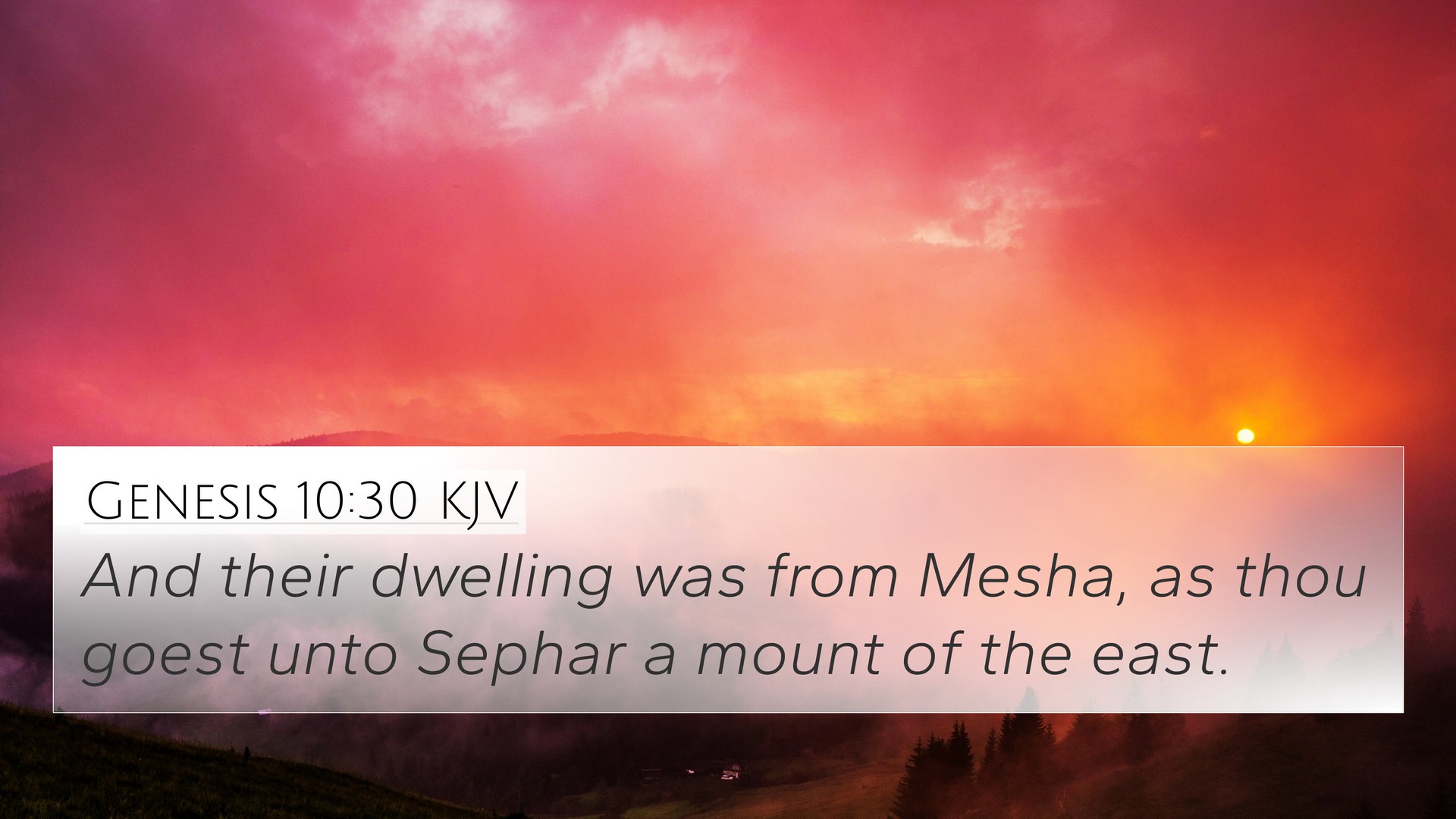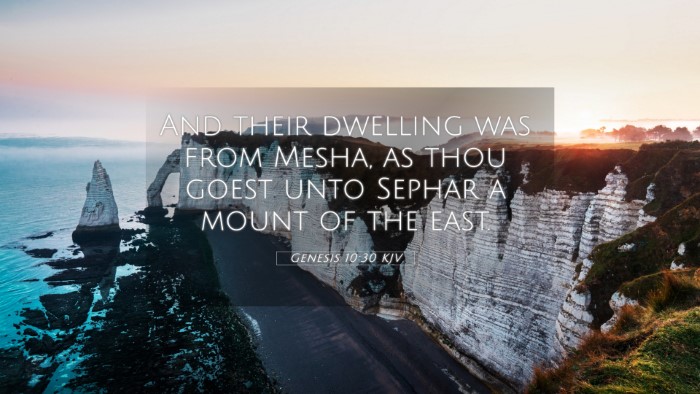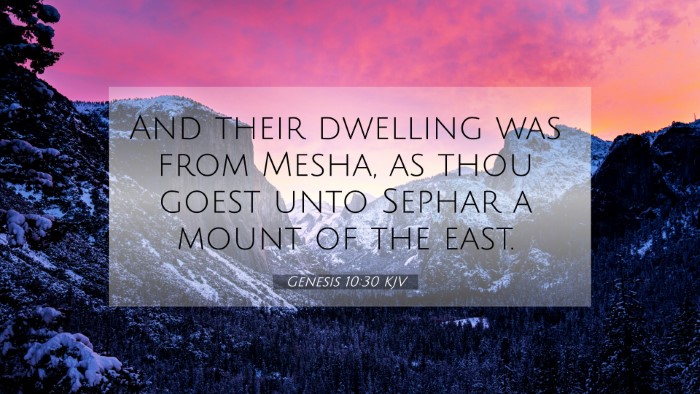Bible Verse Meaning: Genesis 10:30
Genesis 10:30 states: "And their dwelling was from Mesha, as thou goest unto Sephar a mount of the east." This verse is part of the Table of Nations, which outlines the descendants of Noah and their geographical spread.
Summary of Insights
This verse indicates the geographical territories associated with the descendants of Joktan, a son of Eber, who is a descendant of Shem. The mention of Mesha and Sephar encompasses a range of historical and cultural significance. Below, we explore the interpretations provided by prominent public domain commentaries.
Matthew Henry's Commentary
Geographical Context: Matthew Henry notes the significance of the geographical locations mentioned in this verse. It emphasizes that the descendants of Joktan settled in places from which they spread out further, signaling the early formation of nations. The use of specific locations serves to document the historic movement of people and establishes a narrative of the development of tribes and peoples.
Albert Barnes' Notes
Tribal Origins: Albert Barnes elaborates on the names noted in this verse, indicating that they represent distinct tribes or groups that can be traced throughout the ancient Near East. The names Mesha and Sephar are believed to correspond to actual locations, reinforcing the legitimacy of the genealogical records provided in the Bible.
Adam Clarke's Commentary
Etymological Significance: Adam Clarke interprets the names as having meanings relevant to the cultural identities of the peoples. Clarke often highlights that understanding these names and their implications can lead to a richer understanding of the ethnic diversity in the region. The roots of their names may link to aspects of their character or way of life.
Bible Verse Cross-References
For deeper study, Genesis 10:30 can be cross-referenced with the following Bible verses:
- Genesis 10:21: Discusses the lineage of Shem, offering context on Joktan's ancestry.
- Genesis 11:10-32: Continuation of the genealogical record stemming from Shem.
- 1 Chronicles 1:24-27: Another account of the ancestors of the Israelites, reinforcing the concepts of lineage.
- Acts 17:26: Highlights God's role in distributing nations, paralleling the dispersion found in Genesis.
- Deuteronomy 32:8: Refers to the division of nations by the Creator, mirroring the themes of Genesis 10.
- Isaiah 19:18: Discusses Egyptian cities named after the descendants of Shem and the influence of these nations.
- Zephaniah 2:5: Talks about the fate of nations descended from ancient peoples, like those listed in Genesis 10.
Thematic Bible Verse Connections
Understanding Genesis 10:30 also involves recognizing thematic connections within Scripture:
- Dispersion of Nations: This theme runs throughout Genesis, including the Tower of Babel in Genesis 11.
- Divine Sovereignty: God’s hand in shaping the nations and their territories as seen throughout the Old Testament.
- Historical Heritage: An examination of how these descendants shaped the cultural and historical context of later scripture.
Cross-Referencing Methods
Utilizing cross-referencing tools helps deepen our understanding of Genesis 10:30. Here are some effective methods:
- Bible Concordance: This tool lists themes and topics with relevant verse references for detailed study.
- Cross-Reference Bible Study: Engaging with a study Bible that provides cross-references alongside scripture can illuminate connections.
- Bible Reference Resources: Websites or materials that compile cross-references facilitate a comprehensive view of interconnected verses.
- Bible Chain References: Following thematic links from one verse to another can show the continuity of biblical themes.
Applying Cross-Referencing Techniques
When applying cross-referencing techniques, consider the following:
- Identify Context: Before diving into cross-references, understand the context of the primary verse.
- Explore Connections: Look for relational themes that can help see how verses inform one another.
- Comprehensive Study: Engage with both Old and New Testament writings to discover comprehensive narrative threads.
Conclusion
In conclusion, Genesis 10:30 serves as a significant point of reference for understanding the early genealogies and territorial distributions of the descendants of Noah. By leveraging tools for Bible cross-referencing and engaging with the insights of traditional commentaries, we can gain a richer comprehension of both this verse and the broader narrative of Scripture.



